Assisting individuals, families, and communities to be better prepared to respond and recover from disasters and other emergencies.
Wednesday, September 28, 2016
San Bernardino shootings news coverage
Case Study: Journalists invade home of terrorist suspects
 |
| LA Times photo of journalists inside the home of Syed Farook |
The invasion was seen on live television. And was soon criticized.
"You have a contaminated crime scene now," CNN legal analyst Paul Callan told host Wolf Blitzer. "They've turned a crime scene in a terrorist mass murder into a garage sale." In a suitably weird twist, states Collins, at the moment of the criticism CNN was airing a split screen with footage from inside the home, showing laundry baskets, documents, toys and other personal effects.
Questions for study: As the police department PIO, what would you do in this situation? How can you provide journalists coverage while protecting the integrity of the crime scene?
Source: Collins, Scott. (2015, December 4). Media criticized for live TV coverage from home of San Bernardino shooters. Los Angeles Times online. Retrieved from
http://www.latimes.com/entertainment/tv/showtracker/la-et-st-media-coverage-home-san-bernardino-shooting-shooters-20151204-story.html
Wednesday, September 14, 2016
Tuesday, August 02, 2016
Managing Life-and-Death Situations
 |
| With an emergency management plan in place, Iowa Gov. Tom Vilsack was prepared when tornadoes hit in 1999. (AP) |
As Vilsack recalls, “Gov. Miller said, ‘Son, emergency management. I guarantee you that within six months something is going to happen in your state and if you don’t handle it well, it won’t make any damn difference what you do in health care or jobs or education.” Read the rest of the article.
Cyber Terrorism Roles Clarified
Clinton’s campaign chief, Robby Mook, told ABC News that “experts are telling us that Russian state actors broke in to the DNC, took all these emails and now are leaking them out through these Web sites. . . . It’s troubling that some experts are now telling us that this was done by the Russians for the purpose of helping Donald Trump.”
 |
| Russians hack DNC emails? Do they favor Donald over Hillary? |
On July 26, 2016 the White House issued Presidential Policy Directive PPD-41 on United States Cyber Incident Coordination to deal specifically with these kinds of threats. The directive indicates which agency handles what and reveals how the administration grades the severity of an event, determining what is significant.
The FBI will be the lead federal agency investigating criminal and national security hacks. The Department of Homeland Security will help organizations reduce the impact of an event and prevent its spread, mainly through preparedness and prevention. The Cyber Threat Intelligence Integration Center, or CTIIC, will gather intelligence to help identify who directed an intrusion or attack. Because the Defense Department does not play a primary role in domestic cybersecurity, it is not mentioned in the directive.
All this has potential for some great spy novels and action movies. It's good to have the roles clarified so we know who the actors will be.
See Presidential Policy Directive PPD-41.
Monday, August 01, 2016
Wildfire Evacuation Plans
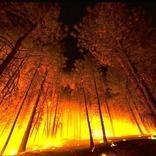 If a wildfire was
headed your way, would you know what to do? According to America’s PrepareAthon! the best action to
protect yourself and your family when a wildfire threatens your area is to
evacuate. If a wildfire was
headed your way, would you know what to do? According to America’s PrepareAthon! the best action to
protect yourself and your family when a wildfire threatens your area is to
evacuate.
To ensure you will be able to
evacuate quickly, you need to plan ahead. America’s PrepareAthon! offers these
tips for a safe evacuation, including:
·
Know your community’s local evacuation plan and
identify several escape routes for your location in case roads are blocked;
include plans to evacuate people with disabilities and others with access or
functional needs, as well as pets, service animals, and livestock;
·
Make a list of items you need or want to take with you.
Be sure to remember the Five P’s Of Evacuation: People, Prescriptions,
Papers, Personal Needs, and Priceless Items; and
·
If you will evacuate by car, keep your car fueled and
in good condition. Keep emergency supplies and a change of clothes in your
car.
When driving away from a fire:
·
Roll up windows and close air vents because smoke from
a fire can irritate your eyes and respiratory system;
·
Drive slowly with your headlights on because smoke can
reduce visibility;
·
Watch for other vehicles, pedestrians, and fleeing
animals; and
·
Avoid driving through heavy smoke, if possible.
For
more information about preparing for wildfires, download the How to Prepare for a Wildfire guide from
America’s PrepareAthon!
The FEMA app is another great
resource to help you prepare for wildfires and other hazards. Download the FEMA app today to receive
safety reminders, alerts from the National Weather Service, and more!
From FEMA's Individual and Community Preparedness e-Brief, July 28, 2016. Provide other events and services for individual and community preparedness that could be included in future newsletters by contacting citizencorps@fema.dhs.gov |
Tuesday, July 12, 2016
Sunday, July 10, 2016
FEMA Releases 2015 National Household Survey Results on PreparednessFindings
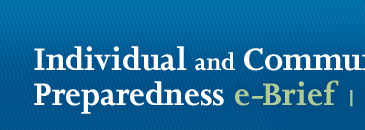

july 7, 2016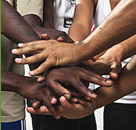


- FEMA Releases Findings on Individual and Community Preparedness
- Alerts & Warnings
- Summer Heat Safety
- Webinar: Emergency Response Training Options for Houses of Worship
- Dates for Your Calendar


FEMA Releases Findings on Individual and Community Preparedness

Findings from a newly-released survey indicate that there are specific levers that government and private sector partners can use to influence and increase overall individual and community preparedness.The Federal Emergency Management Agency's (FEMA) Individual and Community Preparedness Division (ICPD) released the findings from its 2015 National Household Survey of 5,000 Americans in June. The survey is designed to measure household and individual preparedness and awareness.Among the most significant findings, the survey found a positive relationship between awareness of preparedness information and the action of taking steps to prepare for a disaster.
The survey also notes a relationship between experience and action, finding that individuals living in areas with a history of a specific hazard and who have experienced the impact of that hazard are significantly more likely to report they had taken basic steps to prepare themselves and their household.
"These are positive results and really help validate the work that FEMA and our partners across the country have been doing," said ICPD Director Helen Lowman, upon release of the survey. "Going forward, we will be able to use this data to include all populations as we continue to build a culture of preparedness."
When it comes to awareness of preparedness information, 66 percent of Americans living in areas with a history of hurricanes reported that they had read, seen, or heard information on how to better prepare for a hurricane within the past six months, the survey said.Individuals living in areas with a history of tornadoes were the next most aware of the pertinent preparedness information for their relevant hazard with 53 percent of respondents in those areas saying they had read, seen, or heard information on how to prepare for a tornado in the last six months.
The survey included a series of oversamples in U.S. counties where specific hazards, including: earthquakes, extreme heat, floods, hurricanes, tornadoes, wildfires, and winter storms, present a risk to those populations.ICPD will be going back into the field later this summer to administer the 2016 National Household Survey.
For more information and to review a summary of the 2015 findings, click here.
Alerts & Warnings
Receiving timely information about severe weather can help you know when to take action to be safe. FEMA, along with the National Weather Service (NWS) make it easy for you to receive alerts and warnings whether at home, work, or school.Do you know the types of alerts you can receive and how you will receive them? The Be Smart. Know Your Alerts and Warnings guide from America's PrepareAthon! highlights several notification systems, including:
- Emergency Alert System (EAS): Used by authorities to send detailed warnings to broadcast, cable, satellite, and wireline pathways;
- Wireless Emergency Alerts (WEA): Free text messages sent by local authorities to equipped mobile devices within a range of cell towers broadcasting in the affected area. You do not have to sign up for WEAs; and
- The FEMA App: Get severe weather alerts from the NWS for up to five U.S. locations; learn how to stay safe before, during, and after disasters; and more. Download the app onto your Apple or Android mobile device.
Accessing these and other notification systems will help keep your family safe when seconds count!
Summer Heat Safety
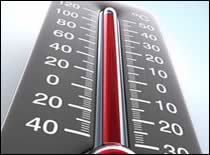
Summer is in full swing and temperatures are on the rise. According to the National Weather Service (NWS), heat is one of the leading weather-related killers in the United States, resulting in hundreds of fatalities each year from heat stroke and even more instances of heat-related illnesses such as heat cramps and heat exhaustion.
Heat stroke is potentially fatal and requires immediate medical attention. Symptoms include extremely high body temperature, red, hot, dry skin, without sweat; rapid, strong pulse; throbbing headache, dizziness, nausea, confusion, and unconsciousness. If you believe someone may have heat stroke, call 911. Familiarize yourself with the signs and symptoms of heat stroke other heat related illnesses and treatment with the CDC Extreme Heat Prevention Guide.The best line of defense against these illnesses is prevention. The Ready Campaign offers the following tips to stay safe when the mercury rises:
- Stay indoors, ideally in a location with air conditioning. If your home does not have air conditioning or if it fails, go to a public building with air conditioning such as a shopping mall or public library;
- Avoid strenuous work or physical activity during the warmest part of the day (typically 11 a.m. – 2 p.m.);
- Cover windows that receive morning or afternoon sun with drapes, shades, awnings, or louvers;
- Dress in loose-fitting, lightweight, and light-colored clothes that cover as much skin as possible; and
- Eat well-balanced, light, and regular meals.
When necessary, NWS issues heat-related alerts to help you prepare for extreme weather conditions. To learn more about these alerts, visit: www.nws.noaa.gov/om/heat/ww.shtml.
Webinar: Emergency Response Training Options for Houses of Worship
FEMA's Individual and Community Preparedness Division (ICPD) invites you to a webinar on Tuesday, July 19, which will feature ways houses of worship and Community Emergency Response Teams (CERT) can partner for emergency response training. The webinar will also highlight how these partnerships improve engagements with diverse communities and populations.Date: Tuesday, July 19, 2016Time: 2:00 – 3:00 p.m. EDTFeatured Speakers:
- Judy Head - Northland Church, Longwood, FL
- Charlotte Franklin - Office of Emergency Management, Arlington, VA
- Alan Harris - Office of Emergency Management, Seminole County, FL
- Marcus Coleman - DHS Center for Faith-based & Neighborhood Partnerships
- Tyler Krska - National CERT and Citizen Corps Program, Individual and Community Preparedness Division, FEMA
How to Join the Webinar:
- Please register for the event using the Adobe Connect registration web link.
- Be sure to test your Adobe Connect connection prior to the meeting.
- This webinar will offer closed captioning.
We hope that you will be able to join us on July 19!
Dates for Your Calendar
- July 10 – July 13: 41st Annual Natural Hazards Research and Applications Workshop – Boulder, CO
- July 22 – 25: National Association of Counties Annual Conference & Expo – Long Beach, CA
- Aug 3 – Aug 5: Florida Emergency Preparedness Association Mid-Year Work Session – Sarasota, FL
- Aug 14 – Aug 17: Association of Public-Safety Communications Officials Annual Conference & Expo – Orlando, FL
- Sept 8 – Sept 10: 30th Anniversary National CERT Conference – Universal City, CA

Contact Us
email: citizencorps@fema.dhs.gov | TWITTER: @Citizen_Corps

Friday, July 01, 2016
Preparedness Kit Fit For Your Pet
Preparedness Kit Fit for Your Pet
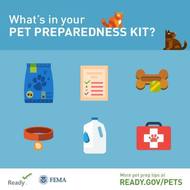 Every member of your household should be prepared for disasters. That means pets, too!
Just as you would create a disaster supply kit for yourself, be sure to also assemble one for your pet. In addition to having enough food and water to last at least three days, the Ready Campaign recommends:
Note: Please store chlorine bleach safely! Keep products containing hazardous materials such as chlorine bleach in their original containers and never remove the labels; never store hazardous products in food containers; and never mix chlorine bleach with any other household cleaning products. Mixing may cause chemicals to react, ignite, explode, or release poisonous gases that will cause very serious breathing problems or death. For the full list of items you should include in your pet’s kit, download Preparing Makes Sense for Pet Owners today! Keep your pet prepared while on the go using the American Red Cross Pet First Aid mobile app. Use this app to help your furry friends during emergencies until you can get to a veterinarian. It’s available for download on Apple and Android devices. |
Leave the Fireworks to the Pros!
Stay safe this holiday. Fire and safety experts agree the best way to enjoy fireworks is from a distance. Leave the fireworks to the professionals!
Fireworks are often used to mark holidays and special events. While these displays may be visually appealing, they present dangers for consumer use. According to the Consumer Product Safety Commission (CPSC), hundreds of people are injured each Fourth of July while using consumer fireworks, including sparklers and firecrackers.
Get the facts about fireworks safety to share with family and friends. Take a look at this fireworks safety video and visit the CPSC Fireworks Information Center.
Tuesday, June 28, 2016
Into the Breach - the Battle of the Somme, July 1, 1916
Monday, April 18, 2016
Damaging earthquake likely in lifetime of many Utah residents
 |
| Wasatch earthquake fault |
“Considering that the average age of Utah’s citizens is the youngest in the nation at about 29 years, there is a realistic chance that many current residents will experience a large earthquake in their lifetime,” says Ivan Wong, Principal Seismologist at Lettis Consultants International and lead author of the report.
The soon-to-be-released report is a collaboration of 14 scientists from academia, federal and state agencies, and private industry. The results underscore the importance of being prepared for damaging earthquakes in Utah.
Scientists cannot predict exactly when and where an earthquake will occur and thus rely on forecasts to convey the chances of future quakes. Similar to weather forecasts, earthquake forecasts give the probability that an earthquake of a specific magnitude will occur within a specific region within a particular time period.
The new report forecasts quakes within the Wasatch Front region, where nearly 80 percent of Utah’s population resides. The report covers time periods significant to an individual’s lifetime of 30, 50, and 100 years, and addresses earthquakes strong enough to potentially cause significant to catastrophic damage, magnitude 5 up to about 7.5. Even a moderate quake of magnitude 5 can cause considerable damage such as fallen plaster and broken chimneys, but a large quake of magnitude 6.75 or greater can cause catastrophic damage, including collapse, to structures such as unreinforced masonry (brick) buildings.
The well-known Wasatch fault is the most likely fault in the region to generate a large earthquake, having an 18 percent probability of at least one earthquake of magnitude 6.75 or greater in the next 50 years. However, the new report highlights many other mapped and even unmapped faults that contribute to the chances of an earthquake. When considered together, these many faults significantly increase the regional probabilities of an earthquake.
Utah residents have several resources available to help them with earthquake preparedness. The annual Great Utah Shakeout is Utah’s largest earthquake drill. Nearly 1 million people are expected to participate in this year’s drill on April 21st. For more information and to sign up see shakeout.org/utah.
Be Ready Utah, the state’s emergency preparedness program run by the Division of Emergency Management, shares information about earthquakes and other hazards on its website, BeReadyUtah.gov, and everywhere on social media.
The Utah Seismic Safety Commission publication Putting Down Roots in Earthquake Country—Your Handbook for Earthquakes in Utah gives information on earthquake hazards and preparedness, and is available at www.utah.gov/beready/documents/roots_earthquake_low.pdf.
The Earthquake and Engineering Research Institute, Utah Chapter, recently published a report describing hazards and loss estimates from a magnitude 7 earthquake in the Salt Lake City area. Scenario for a Magnitude 7.0 Earthquake on the Wasatch Fault–Salt Lake City Segment—Hazards and Loss Estimates is available at dem.utah.gov/wp-content/uploads/sites/18/2015/03/RS1058_EERI_SLC_EQ_Scenario.pdf.
Also, EERI Utah is conducting a Utah Earthquake Resiliency Workshop (utah.eeri.org/?p=441) on April 27 at the Viridian Event Center in West Jordan. This workshop will highlight topics related to improving community recovery after a damaging earthquake. The workshop will feature nationally known experts as keynote speakers with significant background in the field of resilience.
Utah Geological Survey Miscellaneous Publication 16-3, Earthquake Probabilities for the Wasatch Front Region in Utah, Idaho, and Wyoming, is expected to be released in early May and will be available for purchase from the Utah Department of Natural Resources Map and Bookstore, 1-888-UTAHMAP, www.mapstore.utah.gov. A PDF will be viewable on the UGS website at geology.utah.gov. This research was funded by grants from the USGS National Earthquake Hazards Reduction Program with additional support from the Utah Geological Survey and URS Corporation. The Utah Geological Survey, a division of the Utah Department of Natural Resources, provides timely scientific information about Utah’s geologic environment, resources, and hazards.
The U.S. Geological Survey has produced a non-technical summary of the full earthquake probabilities report. USGS Fact Sheet 2016-3019 is available at pubs.er.usgs.gov/publication/fs20163019.

